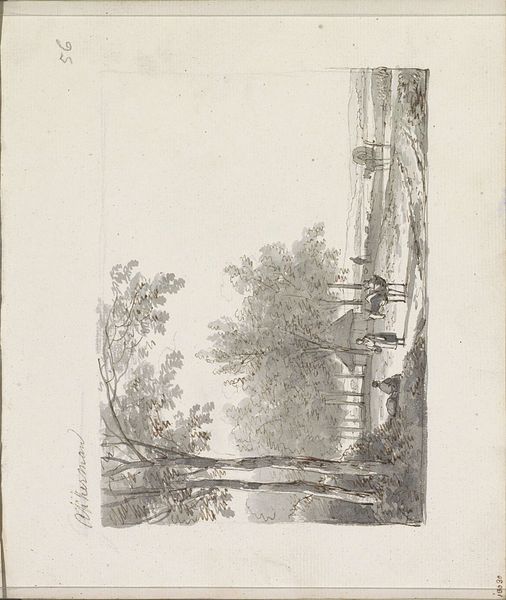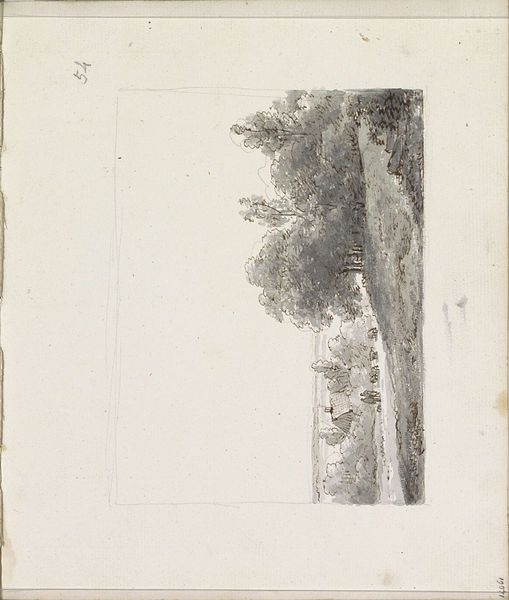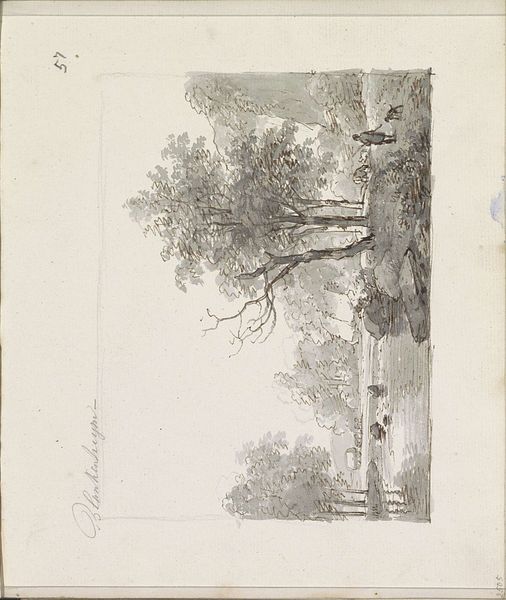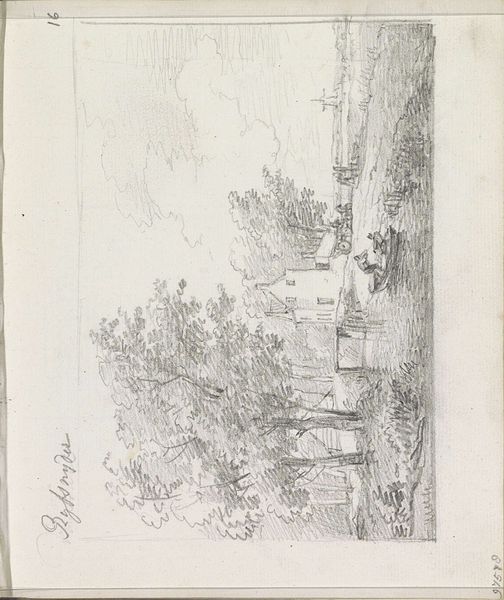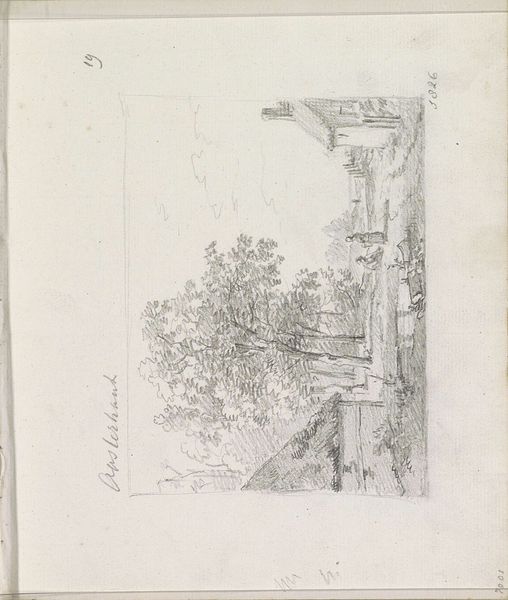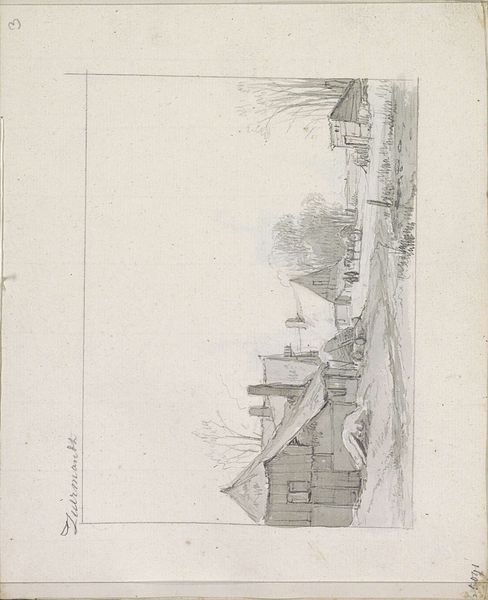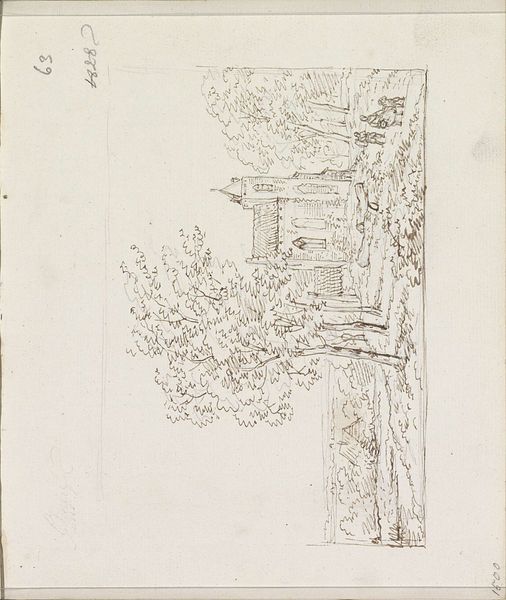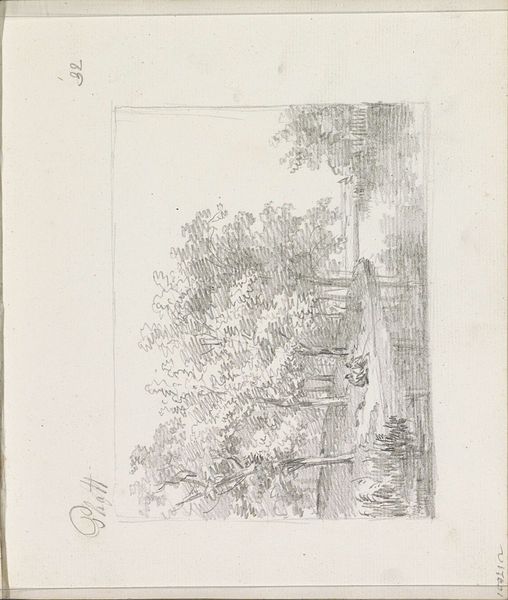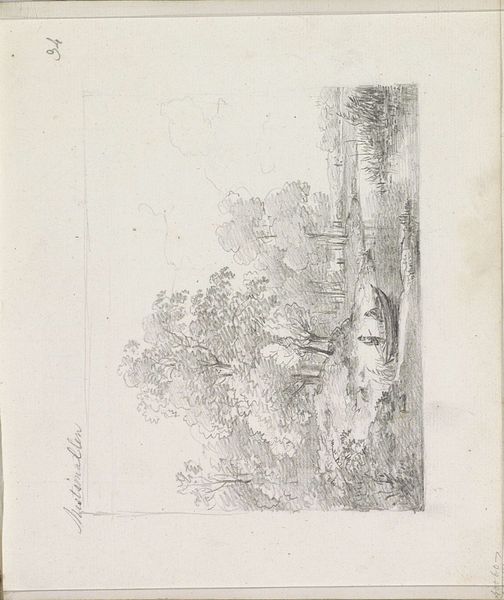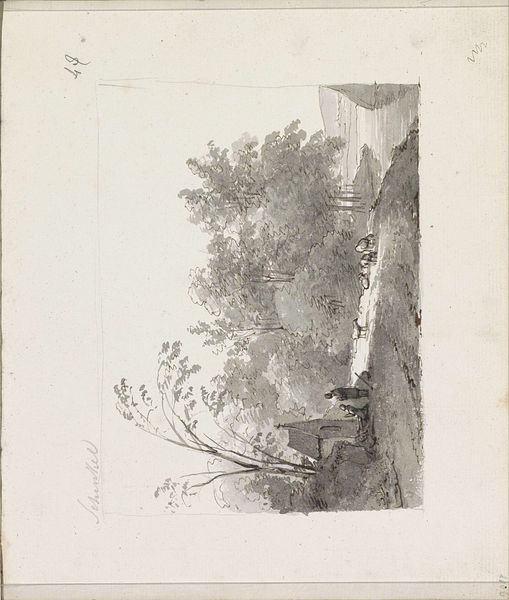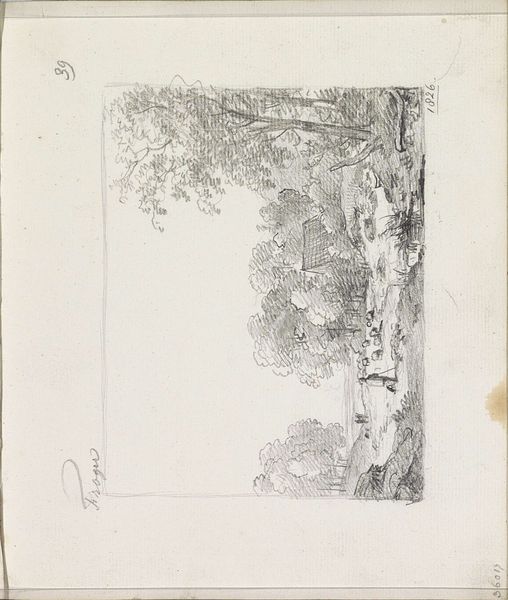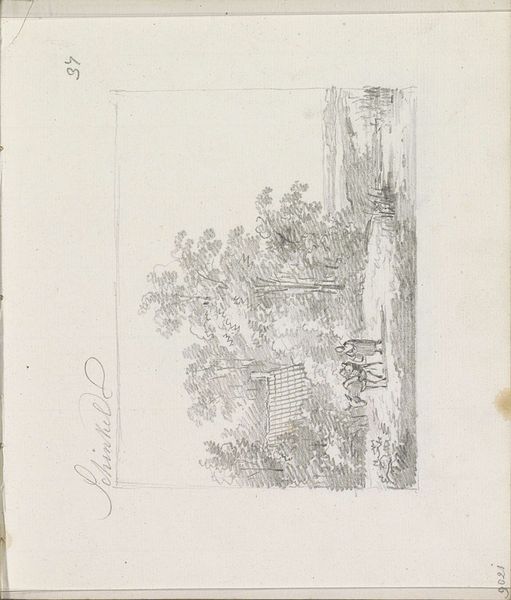
drawing, ink
#
drawing
#
landscape
#
ink
#
romanticism
#
realism
Copyright: Rijks Museum: Open Domain
Curator: Before us is "Landscape with a Standing and Resting Traveler," an ink drawing by Andreas Schelfhout, dating back to circa 1825-1829. Editor: My first impression is one of tranquility, even resignation. The limited palette, the somber grays, creates a muted, reflective atmosphere. Curator: Indeed. Schelfhout, while working within the conventions of landscape, often imbued his scenes with social commentary. Consider the figure. Are they resting by choice, or out of necessity? Editor: It's a subtle study in contrasts. The dense, layered ink washes depicting the foliage are very well considered, but there is a feeling of attenuation and constraint; this effect contributes to the work’s rather muted affect. The eye is constantly pulled back into the texture of the landscape, denying the viewer easy closure or easy legibility. Curator: And the road, dividing the landscape, is interesting too. This depiction of the divide suggests a societal stratification, and the very real separations experienced by people traveling. I see a symbolic path that highlights inequitable movement, access, and the labor required. Editor: I read the path as also directing our eye through the composition. We start from a shady and contained right portion and gradually move back to the distance in a controlled manner; there’s a definite formal elegance, even though the color range is deliberately constrained. It does invite meditation. Curator: But that meditative quality, that deliberate staging of perspective, cannot exist without a grounding in the realities of the time, the economic struggles, and the societal divisions. This isn’t just about observing a landscape; it’s about critiquing the social order embedded within it. Editor: Well, from a purely formal perspective, I find it difficult to disentangle these considerations; to pull the formal elements and their expression completely away from any content it suggests. These features co-exist to communicate that restrained peacefulness and contribute, perhaps ironically, to the beauty of the work. Curator: I concede there’s beauty, but seeing the labor, seeing the undercurrent of struggle, complicates any simple reading. It enriches it. Editor: Exactly, which encourages one to keep coming back to consider its visual language.
Comments
No comments
Be the first to comment and join the conversation on the ultimate creative platform.
